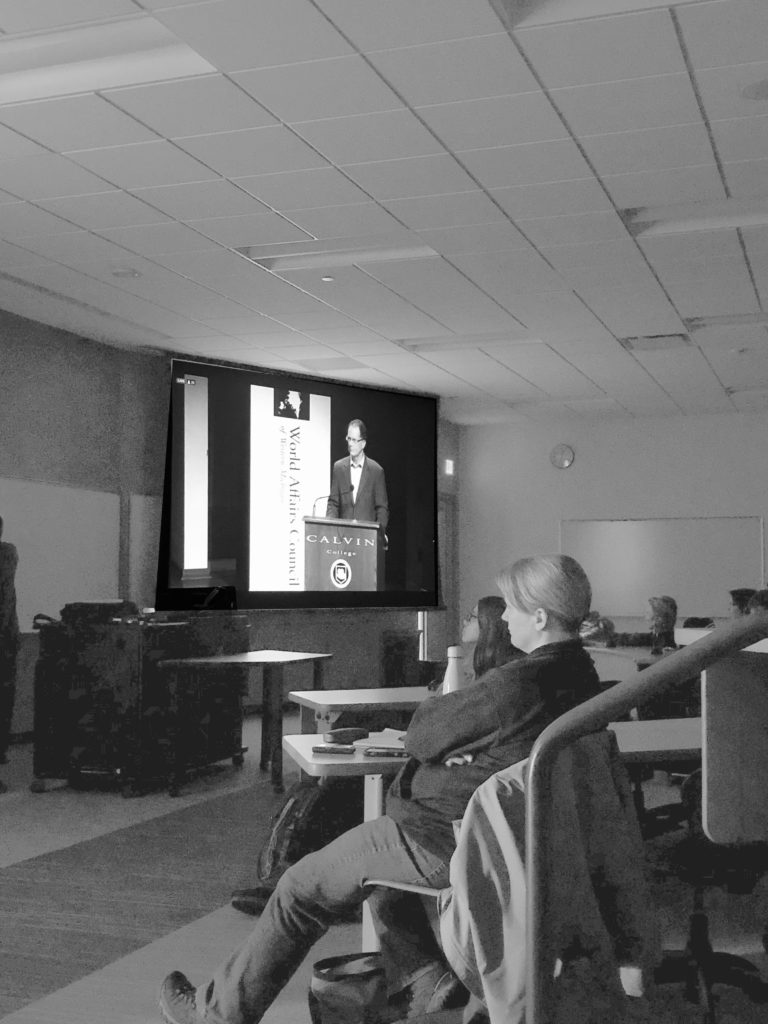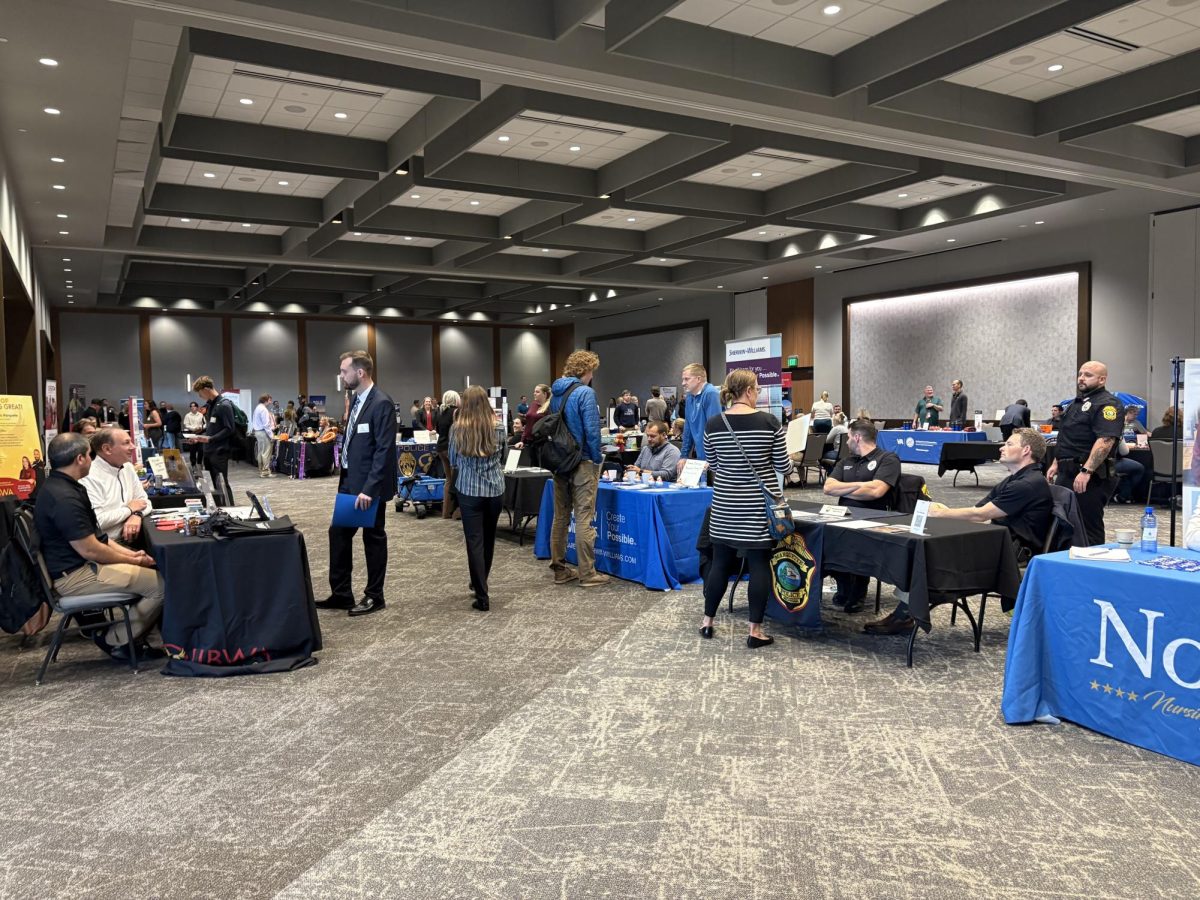There’s nothing more topical than immigration, but this is not a security crisis. This is more of a humanity crisis, and fixing the border issue goes back to the center of the source, Former U.S. Ambassador James Nealon said in a virtual lecture Tuesday afternoon.
NMU’s Political Science Department and Public Administration sponsored the third lecture from the World Affairs Council of Western Michigan’s “Great Decisions” series. Virtually aired from Calvin College, Jamrich room 1320 was packed with students and community members to hear about Nealon’s experience as U.S. Ambassador of Honduras from 2014 to 2017 and his take on immigration.
The lecture, “Immigration Policy Beyond the Border,” focused on Nealon’s firsthand, field experience in Honduras, where so many — from that country to all other surrounding Central American countries — flee to find asylum in the United States. People migrate to the United States because there are certain “pull and push factors,” Nealon mentioned. Pull factors refer to the aspects that draw people here whereas things like violence and suffrage are push factors that drive people away from their homelands.
Though most immigrants coming into the United States seek employment so they can send money back to their families, it’s “crucially important” to understand the pull factor families feel when most do not return to their homelands for holidays for fear of not being able to reenter the country. Family reunification compels others to migrate, therefore causes more influxes of individuals to cross the border, Nealon noted.
“Is it our problem that Honduras and the other countries of the Northern Triangle are violent? That the police and courts are corrupt? Is it our problem that the economy can’t create enough jobs to keep people at home?” Nealon asked. “What is the U.S. national interest when it comes to Central America and migration? I believe that the national interest is clear.”
“If we want to drastically decrease irregular migration from Central America, history shows that we won’t be successful just by playing a strong defense on our border. You’ve all heard the saying, ‘If you build a 30-foot wall, I’ll bring a 31-foot ladder.’”
The ambassador referenced his field experience in Honduras and his 29 years overseas, mentioning how the problem stimulates back to the poor countries and the infrastructure of their governments. And immigration has seen improvements from 2000 where 1.6 million were apprehended at the border to 400,000 last year.
But there are still many women and children, mainly, who turn to the United States in hopes of refuge.
The answer is not just handing over money and expecting the governments to resolve the issues themselves, Nealon explained, this is going to take a partnership between the governments of Central America and the United States to invest in efforts to improve conditions at home so people will feel safe and won’t feel the need to migrate. Most of the migrants who flee their homelands are victims of violence and seek asylum when they reach the U.S. border, he said, adding, but they must prove they have a credible fear.
What provokes an individual to leave their homelands deals with three main push factors: violence, weak institutionality and the desperate lack of unequal opportunity.
Though fixing the problem won’t happen overnight as seen with Columbia 20 years ago, but it’s going to take a “real political discussion” to get things done, Nealon added. And this is an issue that not only divides us but it difficult to discuss because it’s such an “emotional issue” and it deals with people, he said.
“It’s cheaper to solve the problem at the source. It’s not cheap, but it’s cheaper,” he added.
Next week’s lecture focuses on “A New Nuclear Arms Race?” and Kelsey Davenport from the Arms Control Association will present on this topic. Each session airs every Tuesday at noon in Jamrich room 1320 and runs through March 26.
























